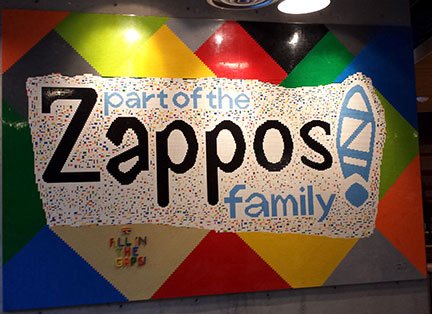Our team was discussing last week’s mammoth post on core values, reflecting on how core values became such an integral component of what we do. As a marketing consulting firm, we certainly didn’t start out emphasizing the importance of “values” in business.
But having spent over a decade studying and analyzing a unique breed of companies that have an uncanny way of attracting and retaining loyal customers, the topic of values became unavoidable.
The Link Between Cult Brands and Core Values
As you know, we call these companies Cult Brands and we call their loyal customers Brand Lovers. We think Cult Brands are special, both from a humanistic as well as a business perspective.
Three reasons for their specialness stand out:
- Yes, Cult Brands tend to be highly profitable businesses. Just look at Apple, Southwest Airlines, and IKEA for prime examples.
- But they also create a meaningful, emotional connection with their customers. They appear to care more and to invest in the customer relationship in ways that don’t clearly translate to increased revenue in the short run. Take, for example, Harley-Davidson’s investment in supporting HOG or in MINI’s investment in Takes the State.
- Finally, Cult Brands find ways to build unique, supportive corporate cultures. Companies like Amazon, Google, Apple, Netflix, Zappos, Southwest, and The Container Store all have distinct cultures that attract good, talented people that help shape their brand.
We believe all three of these elements are related; they are all important. Profit is a consequence of creating an emotional connection with your customers and fostering a unique culture that stands for something meaningful to its employees.
Establishing core values, as we saw last week, is a critical part of cultivating your culture.
The Link Between Core Values and Customers
Did you review the 100+ examples of core values from a dozen successful companies last week?
It’s interesting to note that many (but not all) of these companies emphasize a focus on their customers in at least one core value. For example:
- Google: Focus on the user and all else will follow
- Zappos.com: Deliver WOW Through Service
- Whole Foods: We satisfy, delight and nourish our customers
- Amazon: Customer obsession
- Zipcar: Obsess about the member experience
- Ritz-Carlton: I build strong relationships and create Ritz-Carlton guests for life
With the exception of Whole Foods, all of these customer-focused values topped their respective lists (for Whole Foods it was #2). This isn’t to say that a customer-centric company must include a customer-forward core value; only that they do seem more likely to do so.
Consider how powerful it is to have a core value—one of your organization’s foundational principles that you live and breathe every day—centered on your customer. This means that every person in your organization, from top-level executives to your front line workers, knows that their customers are important.
The employees understand that their behavior and decisions must be in alignment with their customers’ best interest. They realize that the company that employs them places a special emphasis on serving their customers.
Core Values + Customer-Centric Culture = Inspiring Leadership
Numerous studies show that outperforming CEOs place an incredibly high degree of emphasis on obsessing about their customers. The above examples are certainly consistent with these findings.
Remember, core values reflect the idealized beliefs, attitudes, and behaviors of an organization. It’s one thing to establish a core value for your enterprise; it’s quite another to actualize it throughout your organization. To make any core value stick requires a great deal of consistent effort on the part of leadership.
Creating a distinct, collaborative culture is a challenging task for today’s chief executives. Cultivating a culture that is also customer-forward, however, is where the magic happens.
P.S. Thank you for all of your responses to our brief survey last week. We’ll soon be announcing a leadership workshop for executives interested in getting more obsessed about their customers. Stay tuned!






 Lori Mitchell-Keller Senior VP SAP, Bert Jacobs CEO Life is good, and BJ Bueno Founder The Cult Branding Company.
Lori Mitchell-Keller Senior VP SAP, Bert Jacobs CEO Life is good, and BJ Bueno Founder The Cult Branding Company.
